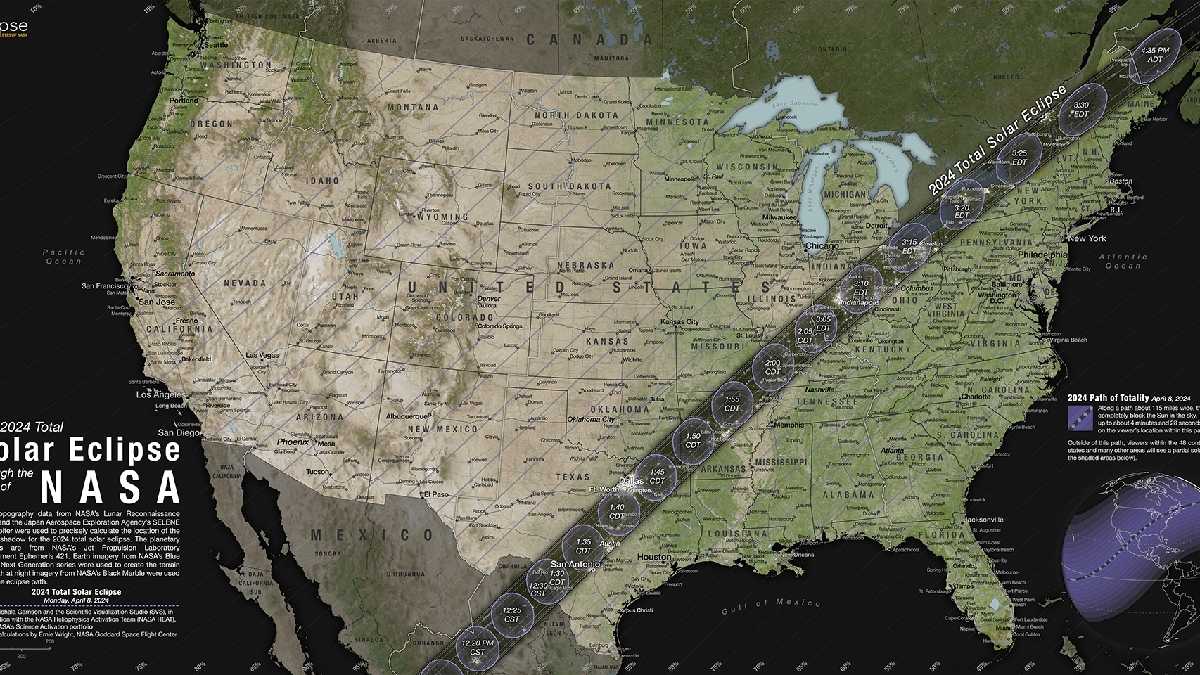News
Total Solar Eclipse 2024: A Rare Celestial Event Set to Enchant North America

Attention stargazers and astronomy enthusiasts! Get ready for the biggest astronomical event of the year: a total solar eclipse set to grace the night sky. The eclipse will cross Canada, the United States, and Mexico as it moves across North America. It’s important to remember that despite the excitement, Indians will not be able to see this particular eclipse. However, scientists acknowledge that this type of eclipse is extremely rare.
When the moon moves between the sun and the Earth, completely blocking out the sun, it is called a total solar eclipse. The sky will get darker, just like at sunrise or sunset. From date to timings, here’s everything you need to know about this celestial event.
The total solar eclipse that will occur on Monday, April 8, 2024, will cross North America, passing over Canada, the United States, and Mexico. The total eclipse is expected to begin over the South Pacific Ocean, according to NASA. Observers in the path of totality will see the sun completely obscured by the moon’s shadow. The eclipse will last between three and four minutes for those directly in the path of totality.
At around 11:07 a.m. PDT, the Pacific coast of Mexico will be the first place in continental North America to experience totality, as per NASA. At 1:27 pm CDT, in Texas, totality will be witnessed as the moon’s shadow moves northeast. The path will pass through many states, including Oklahoma, Arkansas, Missouri, Illinois, Kentucky, Indiana, Ohio, Pennsylvania, New York, Vermont, and New Hampshire, before moving into Canada’s Maritime Provinces. The longest duration of totality will be 4 minutes and 27 seconds near Torreon, Mexico, which is nearly double that of the 2017 eclipse.
The most important consideration when viewing a total solar eclipse is safety. Make sure you know when to wear special eye protection designed for viewing the sun. Looking directly at the sun without special eye protection is unsafe, except during the brief total phase of a total solar eclipse when the moon completely obscures the dazzling face of the sun. Looking at any part of the bright sun through a telescope, binoculars, or camera lens without a special solar filter attached to the front of the optics can quickly cause serious eye damage. Before and after totality, you must always use safe solar viewing glasses, sometimes called ‘eclipse glasses,’ or a safe hand-held solar viewer to view the partial phases of the eclipse directly with your eyes. An indirect viewing technique, such as using a pinhole projector, is another option.












